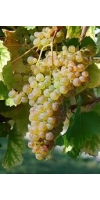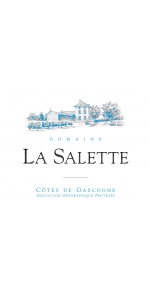Colombard

Colombard is a white wine grape that is known as the French Colombard in North America. Some believe that it is a clone of the Gouasis Blanc and the Chenin Blanc. This early fruiting white wine grape was traditionally grown in the Gascony and Charente’s regions of France and is still among one of the few white wine grape varieties that is permitted in Bordeaux wine. Old Colombard vine grapes are crushed into a fruit white wine by some northern California vineyards producing a white wine with character in sweet and dry versions. Colombard is mostly grown in California in order to provide backbone because of its natural high acidic character for white wine jug blends. Because of its naturally high acid content, Colombard is a good choice for blended white wines. The Colombard white wine grape was the most popular vine grown in California until the early 1990s, as it was often the base for jug wines that were produced for the masses. If Colombard is treated properly, it can produce crisp white wines with a pleasant minerality and a citrus fruity aroma and flavor. In South Africa Colombards is known as Columbar, and to a somewhat lesser extent in Australia.
Salette Cotes de Gascogne Blanc is made from 80% Colombard, 10% Ugni Blanc and 10% Gros Manseng.
Fresh, clean and lively with intense exotic fruit aromas. Crisp, clean and zesty in the mouth, it offers delicate flavors of citrus fruit and grapefruit, and a long lingering finish.
Enjoy as an aperitif or with grilled fish, shellfish and appetizers.
- back
Selected Options
Grape Types
Categories
Pricing
Countries
Regions
Grape Types
Wineries
Organic/Free Shipping
Inky purple-red in color with intense depth to the rim. Aromas of sweet rich fruit and lifted cedar oak fill the glass. Abundant blackberry, violets and cigar box roll through the profile adding complexity and interest. The palate is round and silky with dark plum, liquorice, briar and blackberry primary fruits. The rich, toasty oak, and fleshy rounded tannins complete the palate of this dense, flowing wine. This poised and powerful wine is drinking amazingly well but with it's density and presence will cellar impeccably well.
Selected parcels of estate fruit were de-stemmed into our open fermenters and seeded with yeast. The ferments were pumped over twice daily to maximise color, tannin and flavor extraction. The temperature controlled fermenters allowed the ferments remain in the 22-25 °C range giving amazing fruit expression in the wine. Each parcel was pressed after a minimum of seven days fermenting on skins. The wine completed both primary and ML fermentation in tank before being filled to American oak hogsheads (300Ltrs) to mature. The wine was aged in a combination of new, 2nd and 3rd use barrels for up to 2 years. Prior to bottling the parcels were emptied from oak and
Rare roast beef or BBQ lamb cutlets
Review:
"Growers in Barossa for six generations, the Thorn-Clarke family farms close to 600 acres of vines, providing the fruit for this sleek, black-fruited shiraz. It’s silky- smooth, with the concentration and density of flavor that takes the tannins toward blood, iron and sage. A deep, dark wine with pleasure to spare, this begins to show floral scents of roses, then detailed flavors of plums and strawberries after a day open to air. - Joshua GREENE
- Wine & Spirits (December 2023), 93 pts
"Opaque dusty garnet color. Aromas and flavors of milk chocolate and coconut, blackberry syrup, eucalyptus, and pepper bbq sauce with a round, dry-yet-fruity full body and a hot, interesting, medium-long finish that exhibits notes of black berry bbq sauce, mint and eucalyptus, and chocolate sauce and vanilla with chewy, drying, coating tannins and light oak flavor. Knows that it is Barossa Shiraz and wears that moniker proudly tattooed as a sleeve; 10 out of 10 typicity here."
- Beverage Testing Institute (June 2023), 93 pts - GOLD MEDAL - Exceptional
Lydian GSM is made from 40% Grenache, 33% Mourvèdre, 27% Syrah.
Lydian was established in 2019 as a new way to experience Washington wine. The team behind Avennia brings you another delicious wine that serves as an introduction to a lifetime of wine appreciation and a fresh take on Washington terroir.
In music, Lydian refers to a mode, or scale that is used as a building block for some of the world’s oldest and newest masterpieces. This happy sounding mode brings joy on its own, yet when molded and crafted by talented musicians can become a work of timeless art.
We believe Washington vineyards produce some of the finest building blocks in the world. With these grapes, and the collective talent behind those growing and working with them, Lydian wines can be as complex, nuanced, and profound as any jazz classic.
Lydian: a fun, fresh take on Washington wine.
Lydian GSM is fresh and lively on the palate, with strawberry, red cherry, and hints of savory earth, fresh mint, and lavender. A delicious wine!





